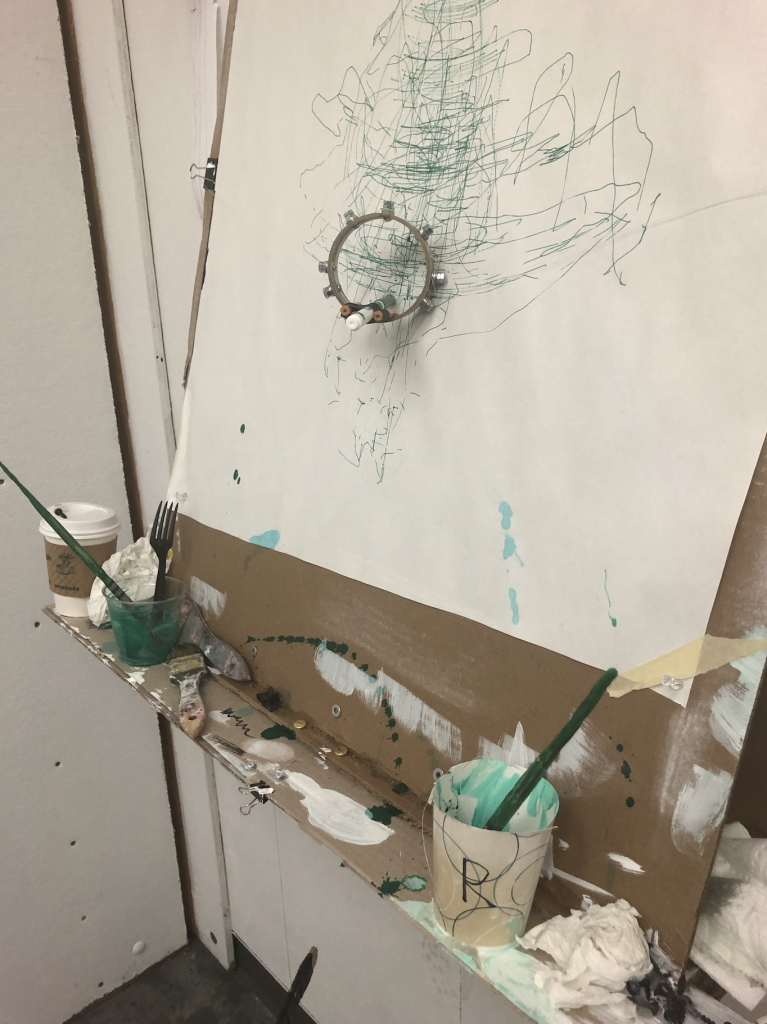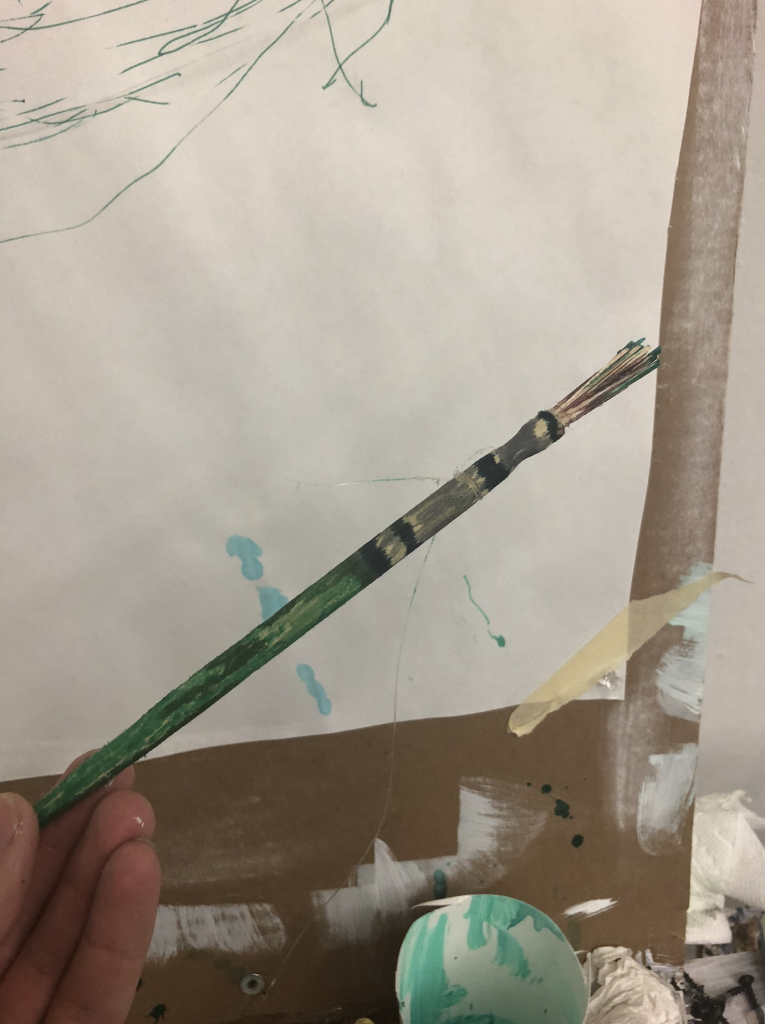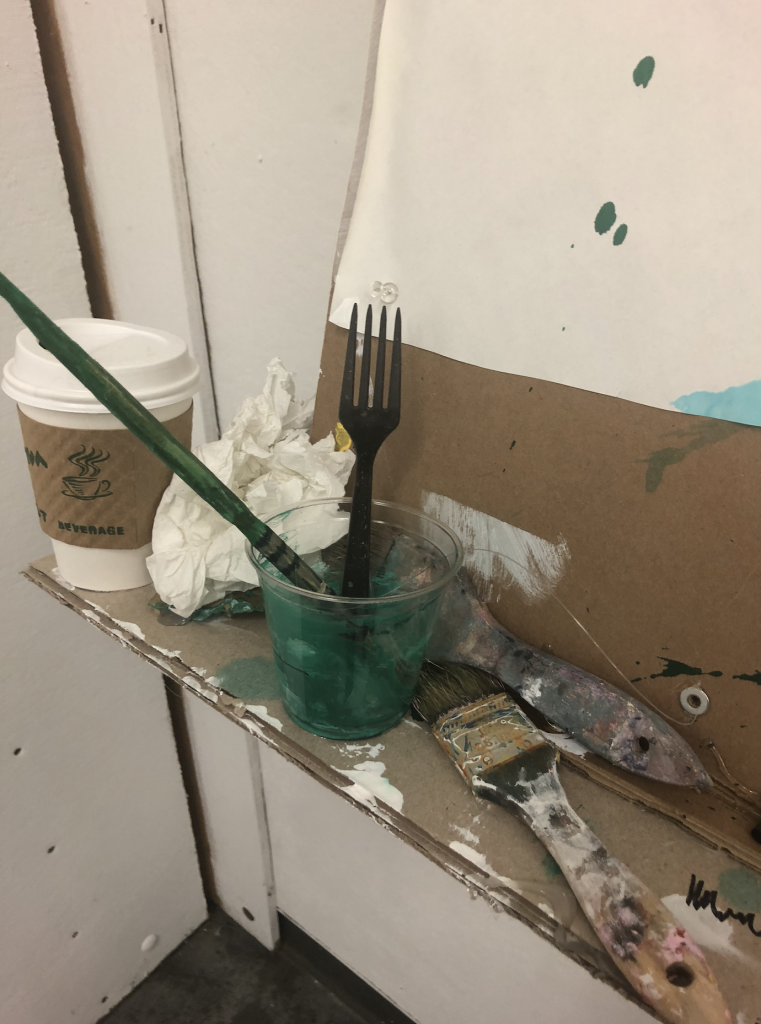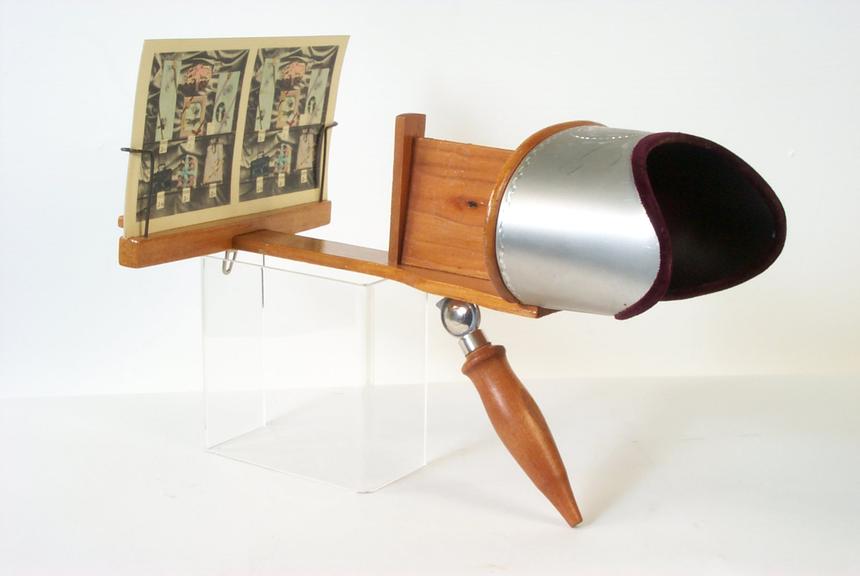
My initial goals for this piece were to use the framework and structure that I developed earlier in the year and take it to a more expanded level. Previously I thought that by increasing the scale of the piece I would give the viewer/artist even more creative control over what they are creating. While my original intentions with this piece were to turn it from a sculpture to an installation artwork, I ended up focusing more on the conceptual aspects of the piece instead of the physical one. I thought that if I were to increase the scale it would help the viewer differentiate between the communicative input and the behavioral input, but I realized that having the machine appear more like a traditional easel was far more vital to the success of the piece.

Generally the machine is physically similar to my first build The easel that I’ve re-constructed is still roughly 3 feet tall and 20 inches wide, and is still controlled by fishing line connected to fabricated wooden paintbrushes instead of the popsicle that had been used as makeshift handles. The fishing line is still threaded through binder clips and washers, but I’ve strengthened parts of the mechanism with more washers in order to further prevent friction so that the center device can move as smoothly as possible.

I was inspired heavily by the work of Peter Fischli and David Weiss, specifically their simulated gallery instillations. I wanted to create a space around my piece that would enhance the viewers immersion in the easel. I also was inspired by their plaster and polyurethane facsimiles, and I created two completely wooden paintbrushes in order to increase the immersion in the piece. The were accurate enough representation that until the viewer touched them they would be unaware. This helped perpetuate my idea of a simulated easel.

Arranged in a haphazard and seemingly unplanned manner, I hoped that the installation would give the impression of unfinished work or activity, still on-going even if it has been halted for the moment. The piece suggests that the viewer has entered into an installation in progress, and that the viewer/participant is looking in on an “unofficial” and not yet presentable space. So much implies the ephemeral and transitory nature of what is displayed, which is so contrary to typical art making machine. So what is crucial to the work is the contradictory nature of making a permanent art work with things that seem to declare their insignificance and impermanence.

I absolutely could have used my conference times better, but my meetings with Angela were very helpful in terms of incorporating elements of the textbook and other works from class into my project. This project blossomed into something much more comprehensive and creative than I had originally planned, and the meetings with Angela helped me really figure out what I wanted from this final conference project. I think the Broeckmann reading also helped me immensely in condensing my ideas into a manageable project.


